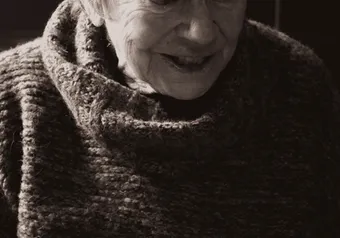Words and photos by Isa S You.
Some of the best food at UBC is underground. Down the stairs into the basement of a beige and unassuming shopping complex, past heavy black emergency doors stained with tape glue, lies the International Food Court. Deep in the underbelly of University Plaza, one can find a plethora of food options at affordable prices and generous portion sizes.
The aroma of spices cuts through the otherwise stale bunker air. Underneath the flickering fluorescent lighting, the lunchtime rush begins, with long lines forming and snaking around the colourfully laminated seating areas. There’ll be a couple of construction workers and UBC staff members, but the majority of the clientele are students, as testified by the snippets of conversations about school assignments and post-grad plans you’d overhear if you payed close enough attention.
Binyam Mesfun is the owner of the Donair Town, the first stall you’ll see after exiting the stairs. Amid the frenzy, he chats with a customer about the weather, scooping heaping piles of rice and potatoes into a white takeout box.
Mesfun has been running his joint in the International Food Court since 2008. After leaving his home country of Eritrea for Sudan, then immigrating to Canada by way of Alberta, Mesfun and his wife decided to start their own business instead of working for someone else.
They can’t close up shop any time they want, but he enjoys the freedom regardless.
Easily missable from the outside, the International Food Court’s existence is spread by word of mouth. It is composed of nine storefronts and currently includes a variety of cuisines such as malatang, donair, sushi and of course, Chinese take-out.
For Erainne Yuting, a third-year business and computer science student, the options available are appreciated since her meal choices are often spontaneous.
“I’ll just decide when I’m here. So I love the fact that [the] food court can offer me that many choices. And for me to think about ‘Oh, well, what’s my mood today and what [do] I want?’”
Born in Shandong, China and having relocated to Singapore with her family when she was 14, Yuting reminisces about the hawker centres of Singapore, where one can get authentic food for cheap.
Her order the day we spoke was a combo from Foodiepower, which consisted of braised pork belly and greens over rice.
Many students go to the International Food Court for comfort food. Over pepper pork, mapo tofu and fried noodles, second-year student Chantal Yao described how in her first year at UBC, she frequented the food court because she missed her father’s cooking.
“I think part of it for me is the familiarity of the foods. I might not have necessarily had these dishes made this way before. But something about the way that they’re made, or the style, just feels really familiar.”
Growing up in Kelowna, at one point Yao was the only Chinese student in an elementary school of 600. For her, coming to the International Food Court is a chance to practice her Mandarin and feel connected to her heritage.
“[It] makes me feel a little bit more Chinese ... because I don’t get much practice outside of Chinese class,” she said.
Yao is an Asian studies major with a focus on China, and has a minor in Asian Canadian and Asian migration studies.
“I came to UBC because it’s a very good school ratings wise, and because it’s situated in Vancouver, a place that’s so diverse. It has a lot of other Chinese people. I wanted to learn more about multiculturalism and Chinese diaspora,” said Yao.
She’s found that her experiences growing up Chinese Canadian have been very different from some of her peers that grew up in the Lower Mainland.
“There’s so many different ways of existing, even if you’re from the Chinese community, Chinese Canadian community,” she said. “There’s so many different back- grounds and different upbringings.”
Yao jokes the diversity of her hometown can be measured by the increase of bubble tea shops that show up in Kelowna.
“When I was a kid, there was one place in Kelowna, that was a specialty bubble tea shop run by this Taiwanese lady. And by the time I was in middle school another one opened up, and five years after that, more and more bubble tea shops kept popping up around town.”
The businesses at the International Food Court form a similar microcosm reflective of the demand from the customer base, with local franchises of international chains like 101 BOBA and Chirpyhut Fried Chicken opening up.
It’s a competitive industry. In the seven years since Kung Fu Noodle opened up shop, 11 other businesses have come and folded, according to its owner and manager King, who only gave his first name.
“We make Chinese food, “ said King in Mandarin, “but there are a lot of different types of Chinese food. If you think about Chinese takeout, it’s got a long history here. A hundred years ago when the Taishanese migrants came over to build the railroad, Chinese takeout began. To the locals here, Chinese takeout is equivalent to Chinese cuisine. But that’s not true, Chinese cuisine covers a wide range of food.”
Lisa Wang, owner of My Home Cuisine, the longest standing vendor in the International Food Court, said the business has made adjustments to the menu based on customer feedback.
“We’ve added some Western style Chinese food, like sweet and sour pork and ginger beef. Southerners, like Cantonese people and people from the Jiangzhe region, they like eating sweet food,” said Wang in Mandarin.
Having been in the food court since 2005, My Home Cuisine is the anchor of the space. Wang said there are students who graduated in the early 2000s, who’ve returned to eat with their new families in tow.
“Sometimes it makes me tear up, because it’s so dear to see them bring their family. They always say they’re back to reminisce about the past,” said Wang.
Gavin Fung, who stood beside me while I interviewed Wang, related to the feeling. A Sauder student hailing from a small town in Alberta, he spent his childhood in his family’s buffet style restaurant.
And yes, Cantonese people really do like sweet foods, he confirmed, as he pointed to the sweet and sour pork in his takeout box. For Fung, his love for the food court is less about the food itself and more about the people there.
“What keeps drawing me back is actually just seeing people eating around. Because when people order food they switch to their native tongue, people serving them recognize them, so they’re like, ‘Oh, you’re back again ... What can I get you, the usual? ’ That kind of warms me up, warms my soul a bit, because my mom would do the same thing,” he said.
Share this article
First online












